Objective:
- How the socioeconomic, technology and policy factors might interact with each other and collectively shape the future landscape for population and health
- Provide a first exploration of the potential of the superblock concept with the help of automated geospatial analysis
Case:
- Global countries, 100km resolution
Methodology:
- GFDL-ESM model
- International futures model (IFs)
- Decomposition method
Data Source: partial open
- IIASA SSP population dataset: NASA SEDAC
- Motality, age and disease: Global burden of disease
- Future population, co2 and mortality
Findings:
- The end-of-century global average temperature is projected to be 1.2-3.9 $^\circ$C higher than the pre-industrial level
- Health damage from ambient PM 2.5 is substantial
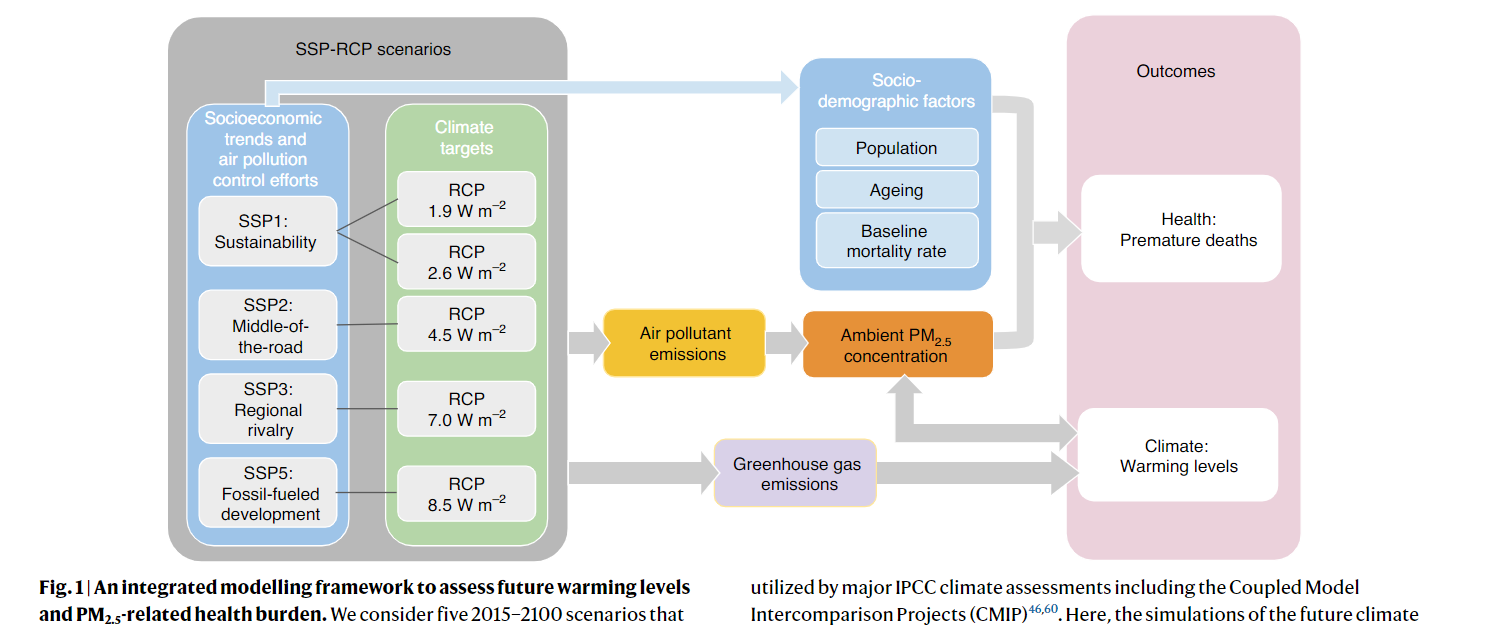
- The most warming is associated with lower deaths than other scenarios with less warming
- Mitigation effeors are not likely to be the most crucial determinant for future PM2.5 related health burden
- 64-69% of the global cumulative deaths occur in three regions: China, India and Africa
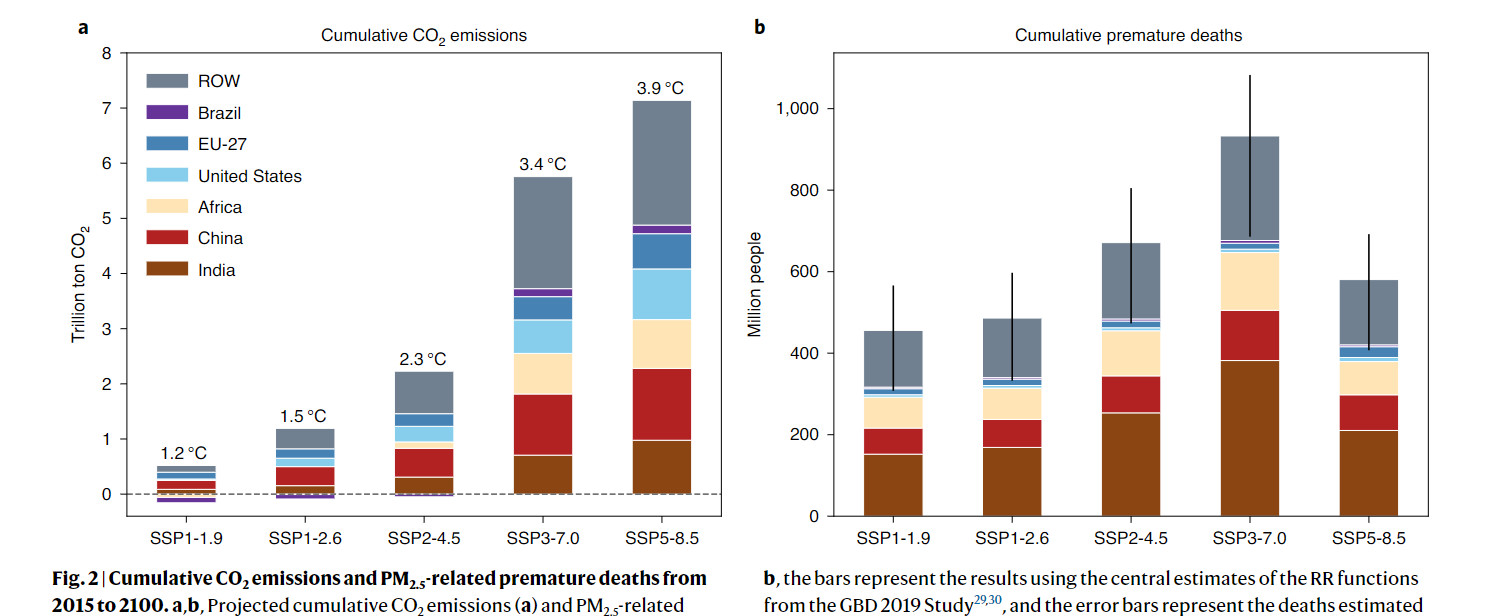
- Ageing and changes in baseline mortality rate play a dominant role in shaping the future health burden from ambient air pollution
- Future pollution level could vary significantly depending on energy choices, climate action and air pollution control efforts
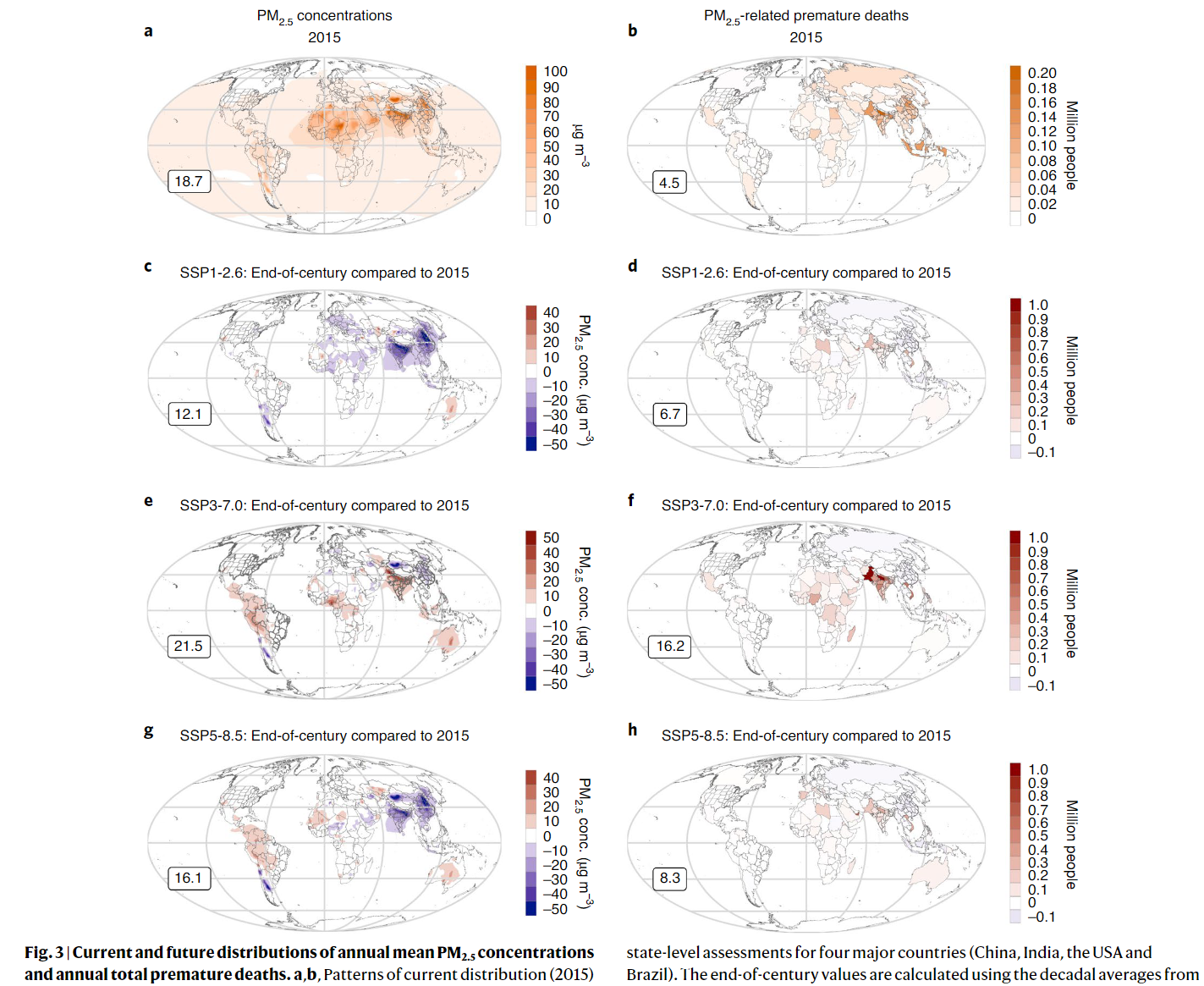

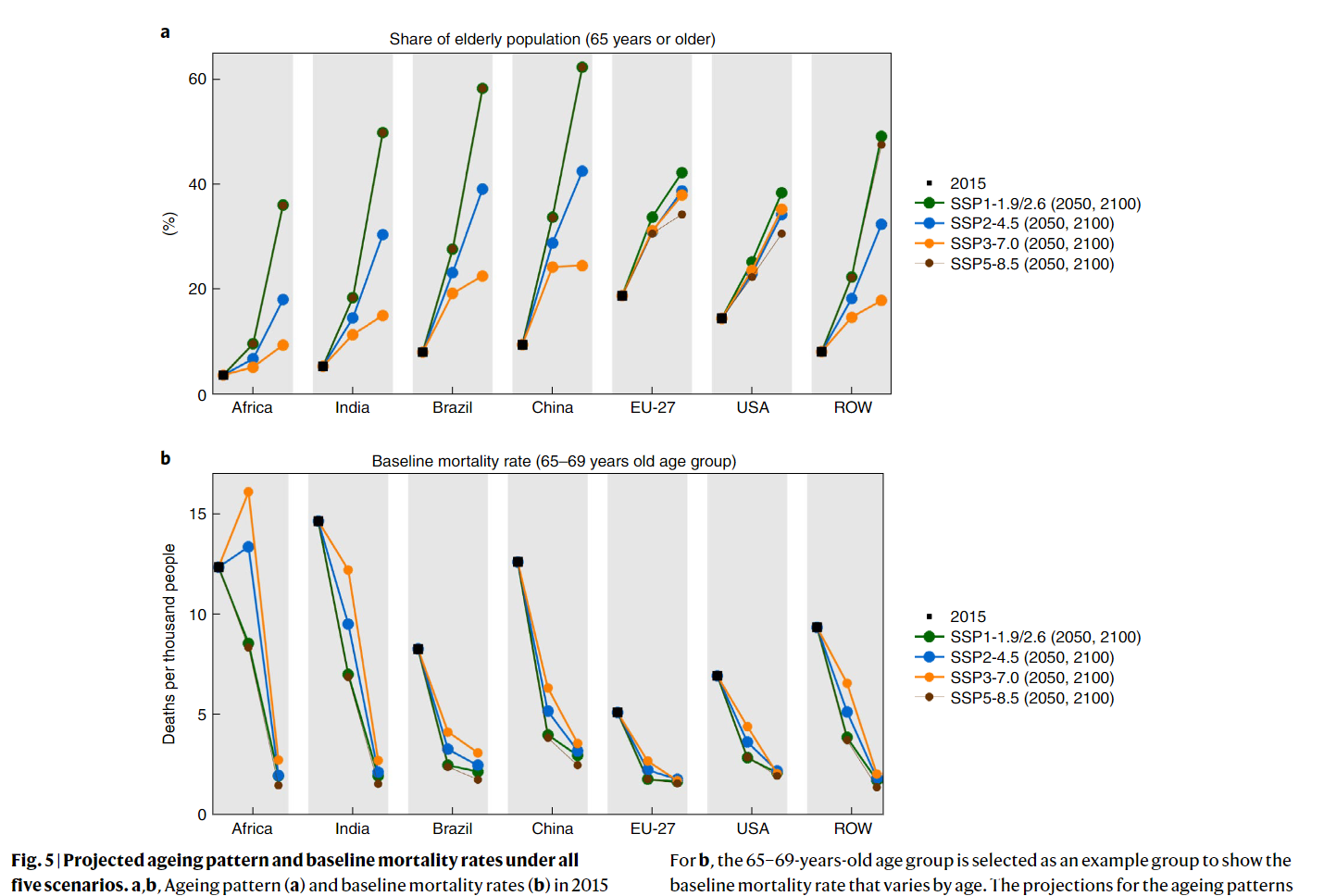
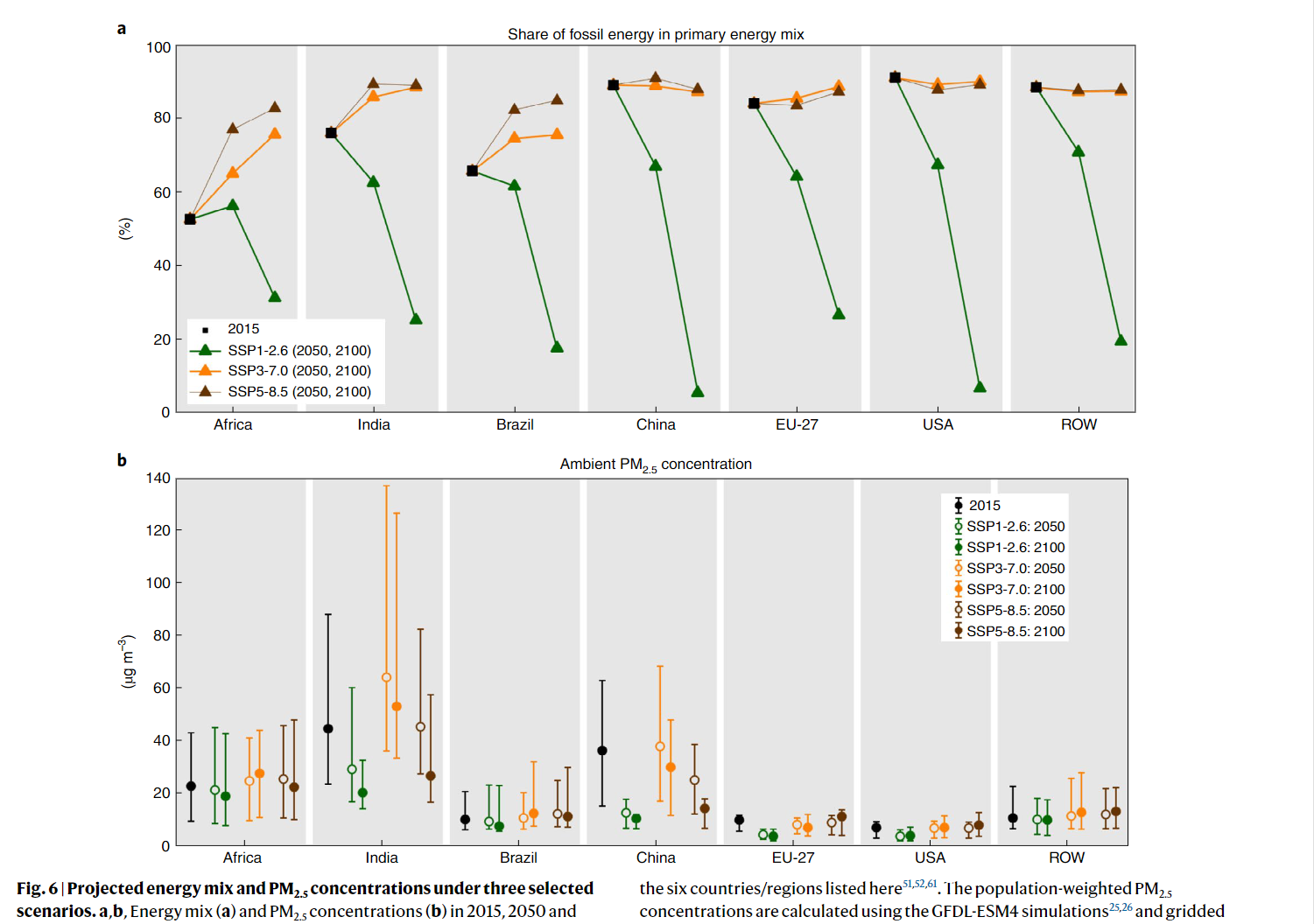
Coding Reference:






